Blog post by Lilly, Zoe and Nestor
This morning, after a hearty breakfast featuring delicious, hand-crafted omelettes, we began the group debates on conservation issues. Beginning with Hannah, Danya and Chloe discussing the topic of ex situ conservation strategies, we delved into the pros and cons of zoos, seed banks and botanical gardens. Danya argued in favour of these methods, positing that these forms of species management are paramount for preserving organisms that have experienced habitat degradation, and for educating the general public. Chloe took the opposing viewpoint, asserting that past captive breeding programs have had very limited success and can be very costly. Hannah moderated the discourse and summarized the arguments presented, citing the need for preservation of functional diversity, and mitigation of anthropogenic effects affecting natural populations to ensure the survival of both species and ultimately the environments within which they exist.
The subsequent debate focused on whether trophy hunting was a useful tool for generating funds for local conservation efforts. Quinn proposed that the benefits of this practice, such as generating in millions of dollars for conservation efforts and thus providing direct incentives and remuneration for protecting endangered species. In addition, regulations that help determine quotas for allowable hunts of charismatic, big game species, based on models that include many variables (i.e. age, sex, maximum hunting quota and recovery time period) have created more sustainable hunting practices. Julia countered that such stipulated quotas based on models can be complicated and inaccurate, potentially leading to detrimental effects on entire species. She also contended that hunting ‘attractive’ animals, which, in Africa, typically refer to dominant, mature males of the ‘Big 5’ species (elephant, lion, leopard, rhinoceros (both black and white), and Cape buffalo), can have negative effects caused by genetic erosion, hybridization, translocation, and inbreeding.
After the debates, we headed to the David Sheldrick Wildlife Foundation (DSWF) Conservancy. This organization rescues orphaned elephants and rhinos, so needless to say the group was excited!
Elephants receive a lot of maternal care in their early years, and cannot survive in the wild until they are over the age of three. The DSWF rescues orphans, and provides them shelter and safety from predators and food. There is an opportunity to see the baby elephants once a day, between 11 and noon, and we felt very fortunate to be able to do this!
What is really special about the DSWF is that they work towards reintegrating the elephants back into wild communities in Tsavo National Park, where they have a station. The babies are able to interact with the wild elephants, but stay at the station until they are fully integrated into a local herd. Elephants are highly social animals so this may take several years. In total, the process can take 8-10 years.
We watched the babies play in the mud (using it to cool down and just be silly), drink milk from bottles provided by the keepers, and roll around together. It was amazing to see how they each had their own personalities! Some of our group got sprayed with mud as the young elephants cast mud about onto their own backs and on each other, but it was worth it.
There were 29 young elephants at the compound today, and they came out in two groups – the younger ones (aged between 2-3 years) first, followed by an older cohort.
The Master of Ceremonies knew every baby by name, and shared some of their stories for each. Many babies were orphaned due to human causes (mother poached, falling down wells). One example was Ambo from Amboseli, who was found fallen trapped in a well.
The compound is right next to Nairobi National Park, but the elephants cannot be released here as there are no wild elephants in the park. However, this means that the lions in the park have not developed a taste for elephant, and so do not pose a threat to the babies.
The DSWF also takes in orphaned rhinos, and reintegrates them into Nairobi National Park.
At around 1:30 we climbed into our trusty Bunduz travel truck, and said farewell to the lovely Kolping Guest House where we had stayed while in Nairobi. Between naps, where our heads lolled to the side, we were fascinated with driving through each town; their bustling weekend markets, the lush rolling hills, the contrast between the suburbs and the slums, seen from inside our truck.
We made a brief pit stop near Karatina, where some of us tried our hand at the art of haggling at the African Curio Store. The store is a cooperative where local artisans send their crafts to be sold with proceeds returning to them but also in part upporting a local aids orphanage. Some students were more successful at haggling than others. Joaquin haggled his souvenirs down from 13000 KSH to 3000 KSH, but it was an exciting experience for all nevertheless!
Rolling through the highlands, we were fortunate to watch the sunset on the horizon over the distant hills. The dark night sky was littered with stars and our ride was occupied with finding constellations. Finally, the truck turned down a narrow path and we were met with barbed wire on barrels and a soldier with a rifle. A very quick 3-point turn away from the military compound and we were on the road again. A few minutes down another dimly lit road and we make a tight turn into an even narrower dirt road. The bushes and the trees that lined the road were no challenge for our massive 6-wheeler truck and our skilled driver. Driving into the African bush further and our nerves became a bit unsettled. Another tight turn at the end of the road inevitably lead to an unsuccessful 78-point turn attempt, and we climbed out of the truck and started to walk to the campsite. Our short walk down the dim dirt road lead us to an oasis. Astounded, we were ushered to our deluxe tents with beds in bed frames, bedside tables, carpeted tents, and most importantly, a strong WiFi connection! This is the epitome of glamping! As if we weren’t impressed enough with the facilities, Chenzen and John whipped up another delicious meal in an hour and a half for all 17 of us. We are all deeply grateful to Chenzen, John, Charles and our talented drivers Moses & Joseph for everything that they do, and to Mukhtar the owner of Bunduz.
What an exciting day! Now it’s time for a good nights rest in these comfy tents!
Click on the photos to see larger versions.
- Karen, Peiwen, and Quinn at the elephant and rhino sanctuary
- Julia, Katie, and Quinn debating the value of trophy hunting as a means to enable conservation
- Njoro and Chenzen whipping up custom omelettes for us
- Zoe and two codgers an the elephant sanctuary
- Chloe, Hannah and Danya debating the value of ex situ conservation
- Meal at our new locale at Angiri near Nanyuki
- Sunset from the truck
- On the bus – a few of us asleep
- View from the truck
- View form the truck
- Local traffic jam
- Bustling town
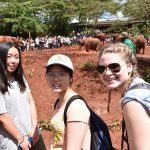
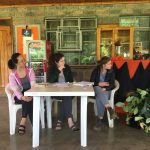
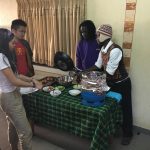
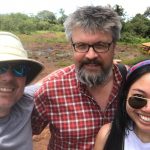
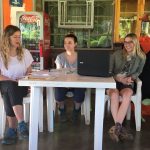
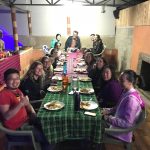
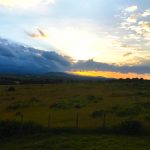
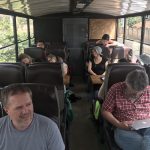

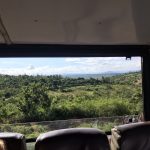
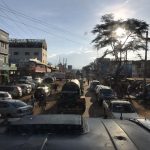
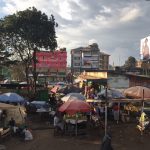
Leave a Reply